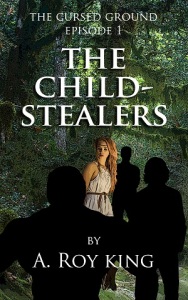In the media, prehistoric humans are often portrayed as naked savages huddling in caves. This is the image you see even in science journalism.
However, is it possible that ancient peoples had technologies more advanced than we like to acknowledge?
This possibility is part of the story concept of my Biblical fiction series, The Cursed Ground. What if, before the Great Flood of antiquity, the earth had carried a very large population of humans, some of whom had achieved relatively advanced civilizations comparable to the Bronze and Iron Ages, or even to more recent time periods?
This is speculative fiction, so I’m permitted to speculate and ask, What if? So I do.
For this reason, I’m greatly intrigued by a video blog called Primitive Technology. The author is a guy in Australia whose hobby is going into the forest wearing nothing but shorts, and then making amazing things. Using whatever resources he can find in the wild, he gathers and traps food, makes tools, builds structures, and much more. Each of his segments is a beautifully-made video without narration, showing his process for whatever the current project is. The blog also includes a written segment explaining what you’re seeing in the video.
Following Primitive Technology has opened my mind to the possibilities of technologies that could be readily available to humans, even without access to urban environments and manufacturing infrastructure.
Here are some of the blog entries that I have found intriguing:
“Building a Wattle and Daub Hut” — To make a small, serviceable hut, with an external chimney and fireplace, Primitive Technology Guy uses various non-complicated tools and materials: a stone hand-ax, small trees, fire sticks, coil pots, bark. Great demonstrations of these basic technologies. That shelter he built in 2013, but then followed in 2015 with a much more substantial project: “Building a hut with a kiln-fired tiled roof, underfloor heating and mud pile walls.” Especially interesting to see how he fires and places the roof tiles.
 As PTG works on these projects, it’s fascinating to watch him make use of basic tools he has made, such as digging sticks, hand axes, a stone axe, stone chisel, and fire sticks, or the ingenious use he makes of raw materials from the woods around him — sticks, vines, bark, clay, leaves, and mud.
As PTG works on these projects, it’s fascinating to watch him make use of basic tools he has made, such as digging sticks, hand axes, a stone axe, stone chisel, and fire sticks, or the ingenious use he makes of raw materials from the woods around him — sticks, vines, bark, clay, leaves, and mud.
“Forge Blower” — My favorite segment, in which PTG uses simple materials like clay and bark to produce a device capable of “supplying forced combustion air required for high temperature furnaces and forges.” In a somewhat related video, we see him “Making Charcoal.” As he points out in his text narrative,
From my research, a natural draft furnace using wood (a kiln) can reach a maximum of 1400 c degrees whereas a natural draft furnace using charcoal can reach 1600 c degrees. Achieving high temperatures is necessary for changing material to obtain better technology (e.g smelting ore into metal).
Part of the takeaway here is that it’s possible to develop processes needed for advanced metallurgy using relatively simple materials.
PTG has made some impressive weapons, such as a “Spear Thrower” and “Bow and Arrow.”
He’s also demonstrated ways to get food in the wild, with all implements made from scratch: “Shrimp Trap” — In which Primitive Technology Guy uses a simple basket-weaved device to trap freshwater shrimp. Then he eats them, of course. Also he plants a “Sweet Potato Patch,” with an enclosing fence to keep out the wallabies.
PTG emphasizes that he doesn’t live this way; it’s his hobby:
Also It should be noted that I don’t live in the wild but just practice this as a hobby. I live in a modern house and eat modern food. I just like to see how people in ancient times built and made things. It is a good hobby that keeps you fit and doesn’t cost anything apart from time and effort.
ARK — 14 November 2016












